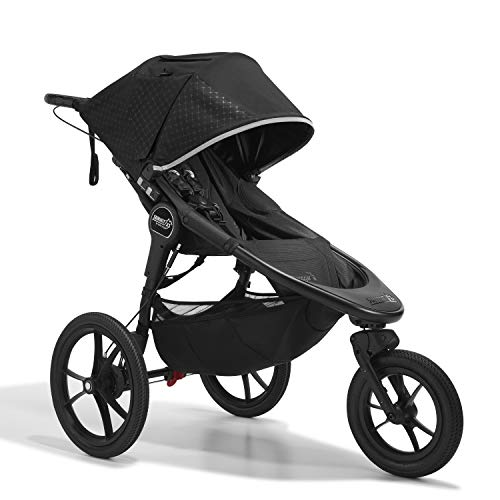7 Things You've Never Learned About Pram Or Pushchair
Pram or Pushchair: A Comprehensive Guide for New Parents
Selecting the best mode of transportation for young children is one of the first significant choices brand-new moms and dads deal with. With numerous choices on the market, the dispute between prams and pushchairs can be overwelming. This short article will provide detailed insights into the differences in between prams and pushchairs, their specs, benefits and disadvantages, and what to consider before purchasing.
Understanding Prams and Pushchairs
At its core, the option in between a pram and a pushchair lies in their design and intended usage.
Definitions:
Pram: A pram, brief for “perambulator,” is designed mostly for newborns. It features a flat, carrycot-style seat that enables the baby to lie down totally flat. Prams are frequently more luxurious and are meant for transferring babies who are not yet sitting up independently.
Pushchair: A pushchair, likewise called a stroller, is designed for older babies and toddlers who can stay up. Pushchairs normally have an upright seat and may not recline completely flat, although many designs now offer adjustable reclining options for convenience.
Secret Differences:
Feature
Pram
Pushchair
Age of Use
Newborn to about 6 months
6 months to 4 years or more
Seating Position
Flat, resting
Upright or slightly reclined
Weight
Generally much heavier
Normally lighter
Portability
Less portable due to weight
More portable and easier to fold
Usage Case
Short strolls, leisurely walks
Daily use, errands, longer outings
Benefits and Disadvantages
Pram
Benefits:
- Comfort for Newborns: Provides a flat surface favorable to a newborn's developmental requirements.
- Stylish Designs: Many prams included classy styles, providing a touch of luxury.
- Storage Space: Sometimes consist of larger storage options below.
Drawbacks:
- Weight: Generally heavier and bulkier than pushchairs.
- Minimal Usage: Suitable only for newborns and babies who can not sit up.
Pushchair
Benefits:
- Versatility: Suitable for older babies and young children, frequently accommodating them for several years.
- Lightweight and Portable: Easier to fold and carry, making them perfect for busy moms and dads.
- Configurable Options: Many pushchairs have adjustable seats and attachments for cars and truck seats and carrycots.
Disadvantages:
- Comfort for Newborns: Not constantly ideal for infants in the early months without a proper insert.
- Less Luxurious: Often viewed as less luxurious compared to prams.
Making the Right Choice
When it concerns deciding in between a pram and pushchair, numerous factors need to be considered:
1. Lifestyle:
- If moms and dads regularly make long journeys or opt for strolls, a pram may be preferential.
- If they need to browse through city streets or take public transportation, a lightweight pushchair may be more appropriate.
2. Spending plan:
Pricing can differ widely. Comprehending your financial limits will assist concentrate on alternatives that fulfill both aesthetic and practical requirements.
3. Flexibility:
Some progressive options consist of travel systems that enable moms and dads to transition from an automobile seat to a pushchair with the very same base, offering maximum versatility.
4. Storage Space:
A pram might take up more space in a lorry or at home, while a pushchair's ability to fold down can be a significant benefit in tighter areas.
FAQs
Q1: Can I utilize a pushchair for newborns?
A1: Some pushchairs come with bassinet attachments or totally reclining seats, making them appropriate for newborns. However, it's important to inspect the specs before use.
Q2: How do I pick the best design?
A2: Consider your lifestyle, budget, and the functions you focus on, such as weight, mobility, and storage options.
Q3: Are prams and pushchairs safe for my baby?
A3: Yes, both prams and pushchairs are created with security functions. Look for models with a 5-point harness, durable brakes, and secure frames.
Q4: How long can I utilize a pram for?
A4: A pram is normally appropriate up until a baby can stay up unassisted, usually around 6 months.
Q5: What are travel systems?
A5: Travel systems are mixes of a vehicle seat and a pushchair that operate in tandem, enabling easy shifts from vehicle to pushchair without requiring to get rid of the baby.
Selecting between a pram and a pushchair ultimately boils down to the requirements and way of life preferences of each family. Prams offer convenience and style for babies, while pushchairs offer flexibility and ease for older babies and young children. By carefully considering pushchairsandprams.uk and requirements, parents can make an educated option that will make sure safe and enjoyable outings with their youngsters.
In the end, whether one select a stylish pram or a practical pushchair, the main goal stays the exact same— guaranteeing convenience and security for the kid while assisting in convenience for moms and dads.
